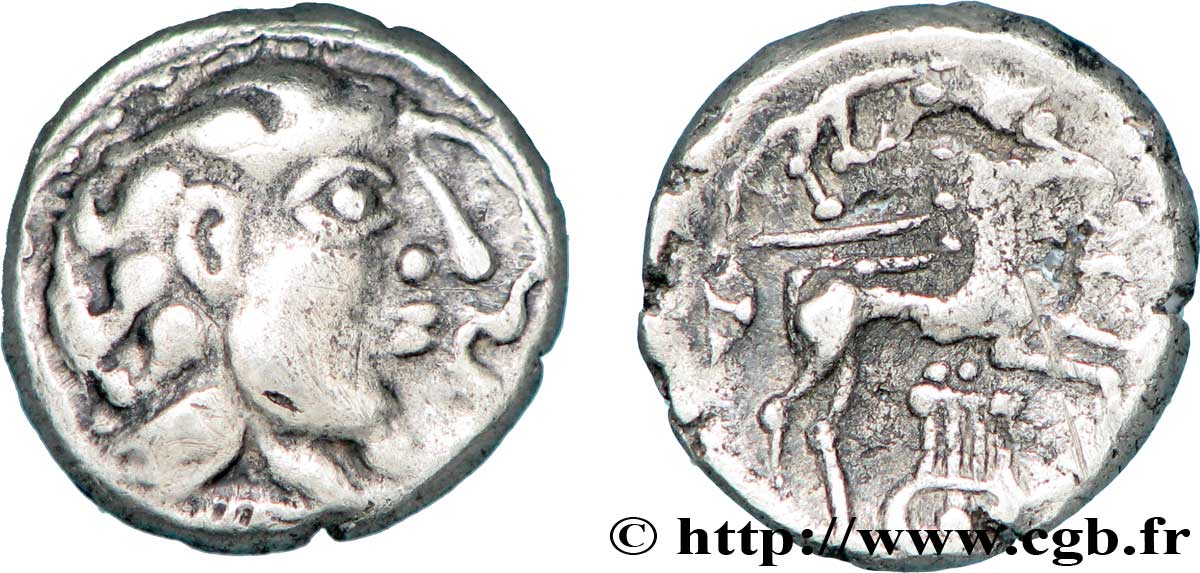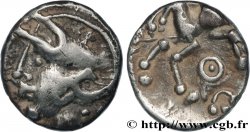v57_0434 - EDUENS, ÆDUI (BIBRACTE, Area of the Mont-Beuvray) Quart de statère en électrum à la lyre, type de Chenôves
MONNAIES 57 (2013)
Starting price : 650.00 €
Estimate : 950.00 €
unsold lot
Starting price : 650.00 €
Estimate : 950.00 €
unsold lot
Type : Quart de statère en électrum à la lyre, type de Chenôves
Date: c. 70-50 AC.
Mint name / Town : Autun (71)
Metal : electrum
Diameter : 12 mm
Orientation dies : 3 h.
Weight : 1,75 g.
Rarity : R2
Coments on the condition:
Belle petite monnaie, sur un flan un peu court et épais, en or très pâle. Droit et revers complets, avec une belle tête assez bien venue mais un revers un peu plus confus avec de petits défauts de métal assez superficiels. Fine patine grise
Obverse
Obverse legend : ANÉPIGRAPHE.
Obverse description : Tête humaine laurée à droite, la chevelure stylisée ; grènetis.
Reverse
Reverse legend : ANÉPIGRAPHE.
Reverse description : Cheval galopant à droite ; au-dessus du cheval, l'aurige ; lyre sous le cheval.
Commentary
Ces monnaies du type de Chenôves se divisent en trois types ; à la lyre (classe I), à la rouelle (classe II) ou au triskèle (classe III).
Cet exemplaire présente un revers classique pour cette série mais un avers d’un style très inhabituel, traité en très haut relief ! Au revers l’aurige aviforme est très net en bord de flan. Alors que certaines monnaies sont plus jaunes ou orangées, cet exemplaire est en or presque blanc.
Cet exemplaire présente un revers classique pour cette série mais un avers d’un style très inhabituel, traité en très haut relief ! Au revers l’aurige aviforme est très net en bord de flan. Alors que certaines monnaies sont plus jaunes ou orangées, cet exemplaire est en or presque blanc.








 Report a mistake
Report a mistake Print the page
Print the page Share my selection
Share my selection Ask a question
Ask a question Consign / sell
Consign / sell
 Full data
Full data









